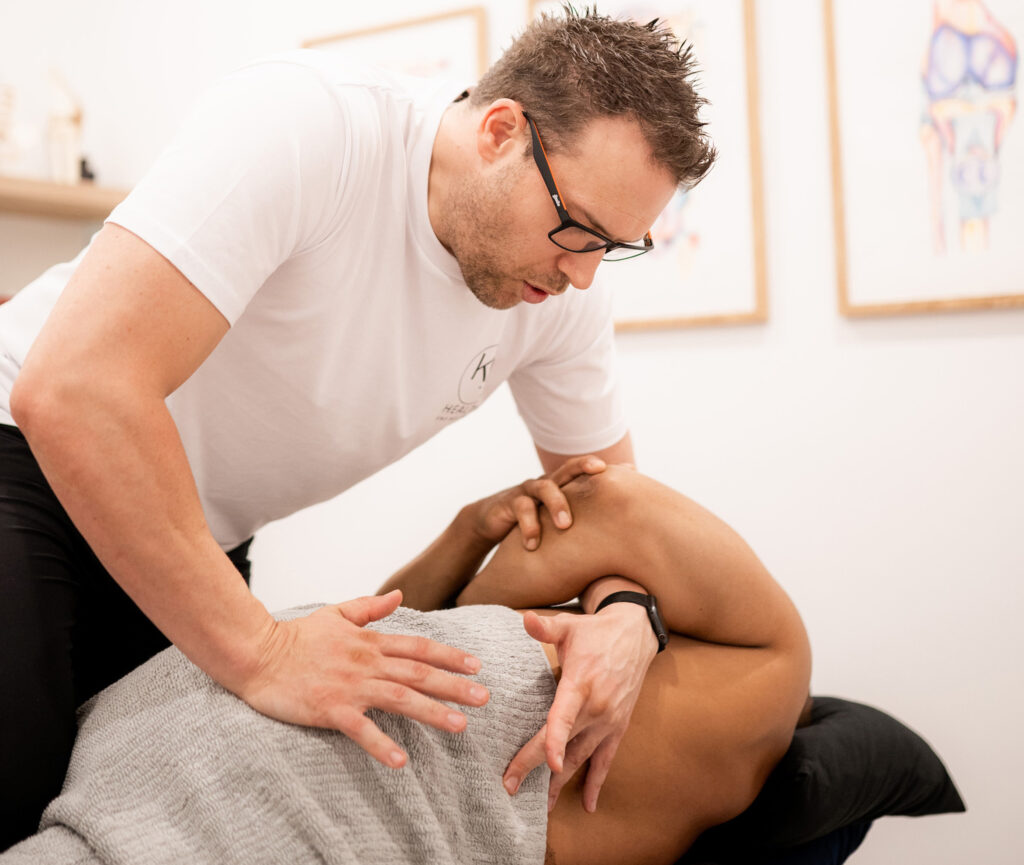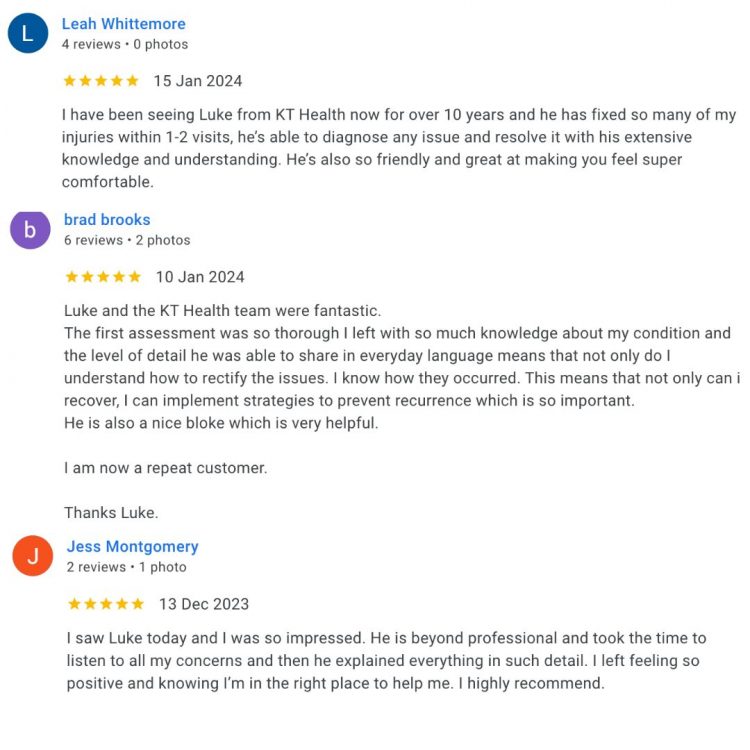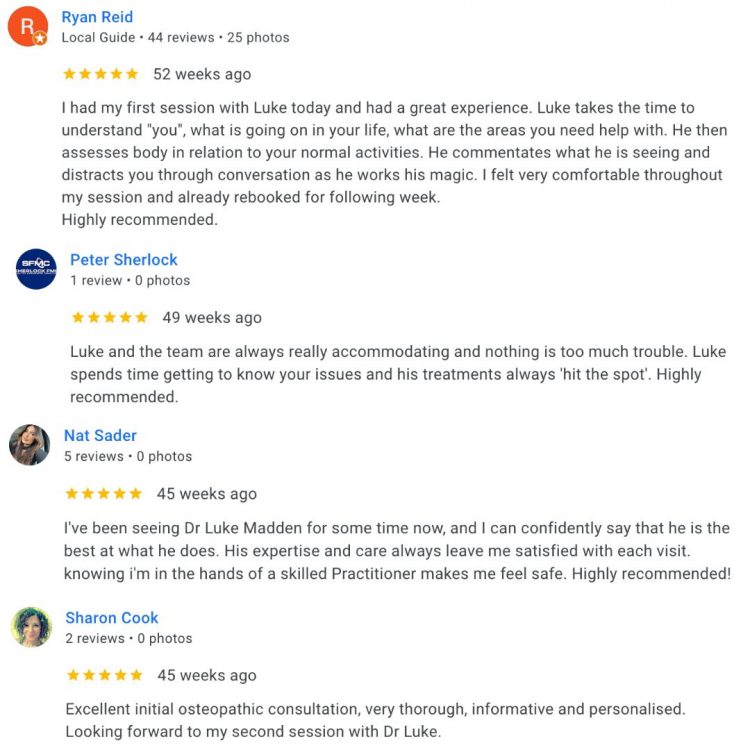Everything You Need to Know About a Femoral Neck Fracture
What is a Femoral Neck Fracture?
A femoral neck fracture is when the top part of the thigh bone (femur), just below the ball of the hip joint, breaks. It’s a serious injury because it can disrupt blood supply to the hip, affecting healing. It often occurs after a fall in older adults or high-impact trauma (like a car accident) in younger people.
An analogy…
Think of the femur like a tree, with the femoral neck as the thin trunk right before the branches. If that thin part snaps, the whole upper part (the ball) becomes unstable, and it’s much harder for it to stay healthy and grow back properly.
What are other names that a femoral neck fracture can be called?
Fractured Neck of Femur
What causes a femoral neck fracture?
The femoral neck connects the shaft of the femur to the head that sits inside the hip socket. It’s a thinner, more vulnerable area, especially in older adults with weaker bones (osteoporosis). When a strong force is placed on the hip, like from a fall or direct blow, the bone can crack or break. If the blood vessels that supply the femoral head are damaged, it can lead to complications like avascular necrosis (bone death).
What are the signs and symptoms of a femoral neck fracture?
- Severe pain in the hip or groin immediately after injury
- Inability to bear weight or walk on the affected leg
- Shortened or externally rotated leg
- Swelling, bruising, or tenderness around the hip
- Limited or painful hip movement
What tests are used to diagnose a femoral neck fracture?
Physical examination: Checking for deformity, swelling, and pain
Palpation: Feeling for tenderness along the hip and femoral neck
X-rays: the main test to confirm a break and assess how displaced it is
How long does a femoral neck fracture take to heal?
Non-displaced fractures may heal in 8 to 12 weeks after surgical pinning or conservative care. Displaced fractures often need surgical repair or hip replacement and can take 3 to 6 months for full recovery. Regaining full strength, mobility, and independence can sometimes take up to a year, especially in older adults.
How does a femoral neck fracture happen?
- Falls, especially in the elderly
- Osteoporosis
- Direct trauma
- High-impact sports or activities in younger individuals
- Chronic conditions like diabetes or arthritis that affect bone strength
What treatment can help a femoral neck fracture?
- Displaced fractures usually require realignment under anaesthetic followed by surgical fixation
- Walking aids or crutches are used for several weeks during recovery
- Hip replacement may be recommended
- Non-displaced fractures may be treated with crutches and/or bed rest.
What exercises or stretches can I do for a femoral neck fracture?
- Early gentle range of motion exercises for the hip and knee
- Ankle pumps and circulation drills
- Progressive weight-bearing exercises using a walker or crutches
- Strengthening exercises for the glutes, quadriceps, and core
What products can help with a femoral neck fracture?
Hip MET extension
Lie on your back and bend your affected leg, bringing your hip and knee to 90 degrees.
Place both of your hands behind your thigh just above your knee, interlacing your fingers.
Try to straighten your hip down towards the floor, while resisting the movement with your hands.
Hold this position, relax, and then repeat.

Heel raise
Stand up straight next to a wall or supporting surface.
Keep your knees straight, and then raise up onto your tip toes.
Slowly lower your heel back down.
To make this more fun you could try putting toys onto a high shelf, or placing stickers onto a paper that is taped onto the wall.

Diagonal reaching high low in standing – alternating sides
Stand with your feet a hip-width apart.
With one hand reach down across your body as if picking up something from the floor.
Straighten back to standing and then reach up across your body with your other hand as if reaching to an upper cabinet above you.
Then return to the start position and repeat towards the other side.

Overhead press
Adjust the seat height so that the handles are just above your shoulders.
Start with your hands slightly above your shoulders and choose a suitable grip.
Press the handles directly upwards until your arms are fully extended.
Return to the start position.

Lunging
Stand up straight with your hands on your hips.
Take a large step forwards on your affected leg.
Bend your knees, lowering your hips down between both feet until your knees are bent to 90 degrees.
Make sure your front knee is directly above your ankle, and pointing forwards.
Push back up to the starting position.

STOP GUESSING – START MOVING
See what other people have said about our osteopaths
Trustindex verifies that the original source of the review is Google. KT health has really helped my back and i have been able to get back into competitive sportTrustindex verifies that the original source of the review is Google. Absolutely amazing, I see Louie Nouh who always listens and caters to my needs. He is amazing at his job and always helps alleviate my pain. I highly recommend Louie.Trustindex verifies that the original source of the review is Google. Friendly, supportive staff. Such a lovely place to exercise! Highly recommend.Trustindex verifies that the original source of the review is Google. Amazing instructor, I am new to Pilates felt very comfortable & supported.Trustindex verifies that the original source of the review is Google. I have been suffering from shoulder and neck pain for months - I saw Dr Louie Nouh a couple of time. His treatment really relived the pain. I have full range of movement now. His knowledge on exercise is fantastic.Trustindex verifies that the original source of the review is Google. Absolutely love reformer at menai. Instructors are amazing. Love Michaela and love the small classes. Highly recommend!Trustindex verifies that the original source of the review is Google. The trainers are all amazing , they explain everthing step by step and help where needed . It is an amazing place to relax get to know other people have a laugh . I recommend for anyone .Trustindex verifies that the original source of the review is Google. Ever since I came here I’ve been looked after by Louie and my shoulder is already feeling much better. Highly Recommend these are good people.Trustindex verifies that the original source of the review is Google. SENSATIONAL Chiropractor in Menai! I attended my first appointment with Dr Louis Nouh at KT Health & Wellness who is an absolute genius even after one session with him. He explained everything he intended to address about my lower back condition, all in easy to understand, layman’s terms. He said he would call me the next day to follow and see how I was feeling after our session and guess what, he did! During our session, he made me feel relaxed and comfortable especially as it was my first chiropractic appointment EVER! For some reason, I am actually looking forward to my subsequent sessions with him next week. Don’t get me wrong, he did poke, prod and crack me as necessary but the results made it seem worth it.Trustindex verifies that the original source of the review is Google. I have been seeing Melinda now for a couple of months to help with bursitis in my hip. She is one of the best practitioners I’ve ever seen.. With the use of various tools and techniques she has helped me recover much quicker than I expected. Thanks Mel and see you tomorrow!
We don't offer magic fixes or cures, but a sustainable approach to back pain.
Our Osteopaths will offer you a road map to help you take control of your back pain and feel great again.
BOOK YOUR OSTEOPATH VISIT TODAY
Book a Time with Dr Luke Madden Below
Book a Time with Dr Melinda Madden Below
Already have an account?
Book as a guest
- Book an Appointment






